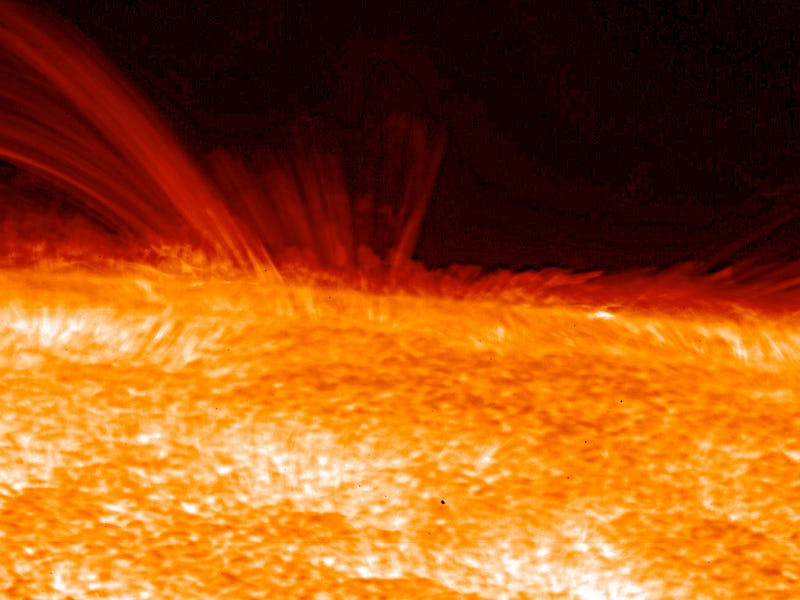Stars Have Massive "Waves" Of Their Own — and They Sound Beautiful
If we could hear the sound of waves rippling up from deep inside a star, this is what they'd sound like.

From our vantage point here on Earth, stars twinkle because our atmosphere warps light passing through it. When astronomers look through telescopes orbiting above Earth’s atmosphere, like Hubble and JWST, starlight is steady and unwavering. But if we could travel into space with a telescope even more sensitive than JWST, we would see the stars twinkling very faintly. If we could zoom in even farther, we would see waves rippling the star’s fiery surface, creating those faint, subtle shifts in its light.
Northwestern University physicist Evan Anders and his colleagues recently simulated how convection deep inside stars produces ripples on their surfaces, how those ripples faintly dim and brighten the star’s light, and even what those waves would sound like if we could hear them. They published their work in the journal Nature Astronomy.
Stars Are in Constant, Violent Motion
Deep inside a star, super-hot gas roils and churns. Picture a bubbling pot of boiling water; it’s exactly like that, except the water is actually hydrogen gas at 27 million degrees Fahrenheit and under tremendous pressure. The convection going on in the inner layers is powered by heat from the star’s core, and all that rolling gas makes massive waves that speed outward through the star. On the surface, the waves appear as ripples that subtly brighten and dim the star’s light.
This is how the ripples at a star’s surface would distort the song “Twinkle, Twinkle, Little Star” if it were passed through three different sizes of star.
“The twinkling that these waves cause is extremely subtle, and our eyes are not sensitive enough to see it,” says Anders in a recent statement. “But powerful future telescopes may be able to detect it.”
Anders and his colleagues used computer simulations to model how convection inside massive stars produced waves, and how those waves traveled through the star’s layers. Some of the waves got trapped inside the star’s inner layers and bounced around, complicating everything, but others made their way to the surface to add a subtle twinkle to the star’s light.
Now that there’s a model for how the slight twinkling of a star's surface is related to waves churned up in its fiery depths, astronomers can use the twinkling as a way to study what's going on deeper inside a star, says Anders.
Listen to the Music of the Spheres
The waves that pass through a star’s layers to make ripples on its surface are very low frequency, which means our ears couldn’t hear them. Anders and his colleagues basically sped them up so they’re within the range human ears can detect. Then the physicists simulated what would happen to a song like “Twinkle, Twinkle, Little Star” if it were distorted by those star waves. The result is pretty eerie.